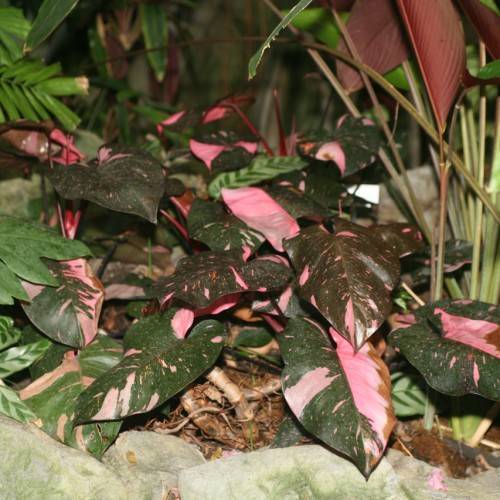
philodendron
Philodendron 'Pink Princess'
Cycle:
Herbaceous Perennial
Watering:
Average
Hardiness Zone:
10 - 12
Flowers:
Flowers
Sun:
part sun/part shade
Leaf:
Yes
Growth Rate:
High
Maintenance:
Moderate
Indoors:
Yes
watering
The best way to care for a Philodendron 'Pink Princess' is to water it regularly and thoroughly. Ideally, water it around once a week to 10 days, checking the soil before watering and only adding water if the top 1-2 inches of soil is dry. If you have very hot, dry conditions in the summer, the plant may need water more frequently. At the same time, always avoid overwatering, as Philodendron 'Pink Princess' will suffer from root rot if it gets too much.
sunlight
Philodendron 'Pink Princess' plants prefer bright, indirect sunlight for about 4-6 hours each day. In the morning, you can give your plant some direct sun, but be sure to not leave it in direct sunlight for too long or it can become scorched. You'll want to avoid leaving your Philodendron in full afternoon sunlight as the afternoon sun can be too intense, especially during the summer months.
pruning
It is recommended to prune philodendron 'Pink Princess' in late spring or early summer. Pruning is important for encouraging lush leaves and should be done to remove any dead, damaged, or diseased parts. Trim off the leaves and stems that are wilted or starting to yellow. This will promote new growth and reduce the amount of space the plant takes up. When pruning, be sure to leave a few healthy leaves so the plant can continue to feed itself.
FAQ
Are heartleaf philodendrons easy to care for?
Yes, heartleaf philodendrons are typically very easy to care for. This popular houseplant is resistant to most diseases and problems, needs minimal pruning, and prefers lower, indirect light. A heartleaf philodendron's soil should be kept evenly moist, with watering every week or two depending on lighting. It's best to let the top couple of inches of soil dry out before re-watering. Remember to mist these plants regularly to compensate for the lack of humidity in many homes. With the right amount of love and care, these beautiful philodendrons will be sure to bring life and color to any home.
Could heartleaf philodendrons be toxic to pets?
Yes, heartleaf philodendrons can be toxic to pets. The stems, leaves, and flowers of the heartleaf philodendron contain calcium oxalate crystals, which are known to cause irritation if ingested. Furthermore, ingestion of large amounts of heartleaf philodendrons can lead to difficulty breathing, drooling, vomiting, and even death in severe cases. Therefore, it is important to keep these plants out of reach of pets, as even causing minor irritation is not ideal.
Do heartleaf philodendrons need frequent watering?
Heartleaf Philodendrons do not need frequent watering. They prefer to be left to dry out in between waterings. When the top inch or two of soil gets dry, it's time to water. However, it is important to not let the soil get soggy and to not let them sit in water. They should also be fertilized seasonally with an appropriate fertilizer.
Can heartleaf philodendrons bloom in low-light conditions?
No, heartleaf philodendrons typically need bright, indirect light in order to bloom. With low-light conditions, you may still be able to keep the plant alive, however it won't produce any flowers. In order to have a healthy blooming heartleaf philodendron, plenty of natural or artificial light (but not direct sunlight) is necessary.
Could heartleaf philodendrons be propagated by cutting?
Yes, heartleaf philodendrons can be propagated by cutting. This is a simple process that involves cutting the stem just above a leaf node. Make sure to use a clean, sharp blade or scissors when cutting and to remove any excess leaves. Then, the stem should be placed in a jar of water so that the node is submerged, and allow the plant to establish its roots in the water before planting it in potting soil. It is important to note that rooted heartleaf philodendrons should not be fertilized for at least the first two weeks after propagation.
